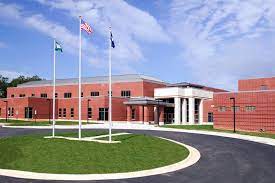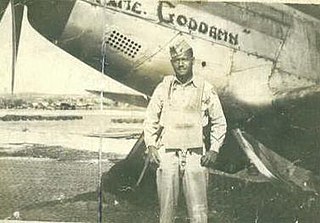Related Research Articles

Hampton is an independent city in Virginia, United States. As of the 2020 census, the population was 137,148. It is the 7th-most populous city in Virginia and 204th-most populous city in the nation. Hampton is included in the Hampton Roads metropolitan area, the 37th-largest in the United States, with a total population of 1,799,674 in 2020. This area, known as "America's First Region", also includes the independent cities of Chesapeake, Virginia Beach, Newport News, Norfolk, Portsmouth, and Suffolk, as well as other smaller cities, counties, and towns of Hampton Roads.

Old Dominion University (ODU) is a public research university in Norfolk, Virginia. Established in 1930 as the Norfolk Division of the College of William and Mary, an extension school of the College of William & Mary for working professionals, members of the military, and non-traditional students in Norfolk-Virginia Beach area of the Hampton Roads region. The university has since expanded into a residential college for traditional students and is one of the largest universities in Virginia with an enrollment of 23,494 students for the 2023 academic year. The university also enrolls over 600 international students from 99 countries. Its main campus covers 250 acres (1.0 km2) straddling the city neighborhoods of Larchmont, Highland Park, and Lambert's Point, approximately five miles (8.0 km) north of Downtown Norfolk along the Elizabeth River.

Hampton University is a private, historically black, research university in Hampton, Virginia. Founded in 1868 as Hampton Agricultural and Industrial School, it was established by Black and White leaders of the American Missionary Association after the American Civil War to provide education to freedmen. The campus houses the Hampton University Museum, which is the oldest museum of the African diaspora in the United States and the oldest museum in the commonwealth of Virginia. First led by former Union General Samuel Chapman Armstrong, Hampton University's main campus is located on 314 acres in Hampton, Virginia, on the banks of the Hampton River.

George Robert Carruthers was an African American inventor, physicist, engineer and space scientist. Carruthers perfected a compact and very powerful ultraviolet camera/spectrograph for NASA to use when it launched Apollo 16 in 1972. He designed it so astronauts could use it on the lunar surface, making all adjustments inside their bulky space suits. Upon instructions from Carruthers, they used the camera to record the Earth's outermost atmosphere, noting its variations, and also mapped portions of the far-ultraviolet sky recording stars and galaxies, and the gaseous media between them. In 1970, sending his instruments aboard Aerobee sounding rockets, he had demonstrated that molecular hydrogen exists in the interstellar medium. Among numerous citations and awards, in 2003, Carruthers was inducted into the National Inventors Hall of Fame, and he received an honorary doctorate for Engineering from Michigan Technological University. He also was awarded the 2011 National Medal for Technology and Invention from President Barack Obama, "For invention of the Far UV Electrographic Camera, which significantly improved our understanding of space and earth science."

Powhatan High School is a public high school in Powhatan County, Virginia. It serves 1,412 students and is the only high school in the Powhatan County Public Schools school system.

George Edward Alcorn Jr. is an American physicist, engineer, inventor, and professor. He taught at Howard University and the University of the District of Columbia, and worked primarily for IBM and NASA. He has over 30 inventions and 8 patents resulting in his induction into the National Inventors Hall of Fame in 2015.
The National Society of Black Physicists (NSBP), established in the United States in 1977, is a non-profit professional organization with the goal to promote the professional well-being of African Diaspora physicists and physics students within the international scientific community and the world community at large.

Julius Henry "Jute" Taylor was a professor emeritus at Morgan State University, where he was also the first chairperson of the department of physics, which he helped to establish at the university. He was the second African-American person to receive a PhD from the University of Pennsylvania in Philadelphia, Pennsylvania, and the first African-American person to receive a PhD in physics at the university. Taylor's research focused on x-ray diffusion, and electrical and optical properties of semi-conductors.
Eleanor Green Dawley Jones was an American mathematician. She was one of the first African-American women to achieve a Ph.D. in mathematics. Jones worked as a consultant for the development of college mathematics curriculums, and as a speaker at events to encourage women and minorities to pursue careers in science and mathematics.

Christine Darden is an American mathematician, data analyst, and aeronautical engineer who devoted much of her 40-year career in aerodynamics at NASA to researching supersonic flight and sonic booms. She had an M.S. in mathematics and had been teaching at Virginia State University before starting to work at the Langley Research Center in 1967. She earned a Ph.D. in engineering at George Washington University in 1983 and has published numerous articles in her field. She was the first African-American woman at NASA's Langley Research Center to be promoted to the Senior Executive Service, the top rank in the federal civil service.

Beth A. Brown was a NASA astrophysicist with a research focus on X-ray observations of elliptical galaxies and black holes. She earned a Ph.D. in Astronomy from the University of Michigan in 1998, becoming the first African-American woman to do so.

Grace E. Harris., was an administrator from Virginia Commonwealth University.

Rutherford Hamlet "Lubby" Adkins was an American military aviator and university administrator who served with the Tuskegee Airmen during World War II. He flew fourteen combat missions with the Tuskegee Airmen. He came home to complete his education and earn multiple degrees: he was the first African American to earn a PhD from The Catholic University in Washington D.C. Adkins went on to serve in many positions in higher education including as President of Knoxville College and Fisk University.

Julian Manly Earls is an American physicist who worked for NASA for over forty years. He has been awarded two NASA Exceptional Achievement Medals and was inducted into the Presidential Rank Award of the Senior Executive Service by both Bill Clinton and George Bush.
James Clinton Davenport is an American physicist and physics professor. He specializes in condensed matter physics and is known for his contributions to physics education. He is one of the founders of the National Society of Black Physicists (NSBP).
Calvin Rudolph Howell is an American physicist and professor at Duke University in Durham, North Carolina.
Arthur Nathaniel "Pete" Thorpe was a physicist and professor at Howard University in Washington, D.C. He was the second student to receive a PhD in physics from Howard, and helped to establish a cooperative degree program between Howard University and other historically Black colleges and universities to increase access to physics education. Throughout his career, his research centered around condensed matter; solid state physics; the evaluation of superconducting materials for space application; and enhancing high-temperature superconductors.
John McNeile Hunter was an American physicist and chemist, and the third African American person to receive a PhD in physics in the United States. He spent the entirety of his career as a professor of physics at the Virginia State College, a historically Black college in Petersburg, Virginia, where he also established and served as the first chair of the college's physics department. Virginia State College's physics program was one of the first at a historically Black college in the country. Hunter's research was focused on thermionics.
Warren Wesley Buck III is an American physicist. He is credited with establishing the physics PhD program at Hampton University, a historically Black college in Hampton, Virginia, which was also the campus's first PhD program in any subject. Buck was also the first chancellor of University of Washington-Bothell and oversaw the university's transition to a four-year institution. His research focuses on nuclear and subatomic particles, including studies of the interactions between particles and anti-particles and the nature of mesons and the quark model.
Harry Lee Morrison was an American theoretical physicist and the first African American physics faculty member at the University of California, Berkeley. His research focused on statistical mechanics within theoretical physics, and he was known for his demonstration in 1972 of the absence of long-range order in quantum systems in two dimensions, that was a result from the breaking of a continuous symmetry.
References
- 1 2 3 Physics, American Institute of (2022-03-15). "Demetrius Venable". www.aip.org. Retrieved 2022-06-15.
- ↑ Times-Dispatch, JOHN REID BLACKWELL Richmond (21 November 2015). "Historical marker dedicated to Pocahontas High School in Powhatan". Richmond Times-Dispatch. Retrieved 2022-06-15.
- ↑ "The Story of the Cooperative Education Physics Program at Howard University | CASL" . Retrieved 2022-06-17.
- ↑ "$5 MILLION ENERGIZES HU PHYSICS PROGRAM". Daily Press. 8 October 1991. Retrieved 2022-06-16.
- ↑ "Demetrius D. Venable - Physicist of the African Diaspora". www.math.buffalo.edu. Retrieved 2022-06-16.
- ↑ MSFC, Jennifer Wall. "NASA - Working With NASA to Benefit Society". www.nasa.gov. Retrieved 2022-06-16.
- 1 2 "Demetrius Dante Venable, PhD". NCAS. Retrieved 2022-06-15.
- ↑ "Demetrius Venable's Biography". The HistoryMakers. Retrieved 2022-06-16.